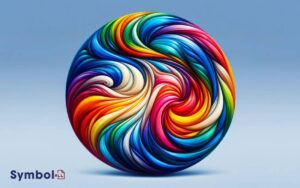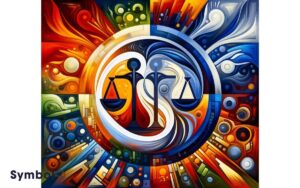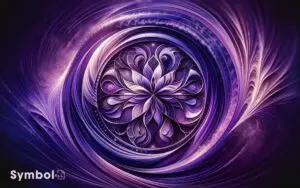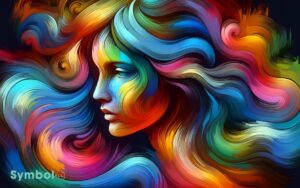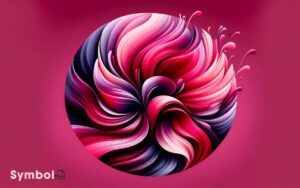7 Key Colors and Symbolism in The Great Gatsby – Free PDF Chart
In 'The Great Gatsby,' color symbolism is essential. White isn't just purity; it's the facade of innocence and luxury.
Yellow and gold aren't merely wealth but deceit and moral decay. Green embodies hope and Gatsby's longing, contrasting the desolation in the Valley of Ashes.
Blue captures unfulfilled desires and dreams' vastness, while red bursts with passion and violence. Gray and silver paint bleakness and cold materialism, hinting at the decay and emptiness beneath.
Each color choice isn't just aesthetic but unravels deeper character motivations and societal critiques, offering a richer understanding of the era's truths. This exploration uncovers layers beneath the vibrant surface.
Key Takeaways
- A chart might visually summarize how colors like green, white, and yellow represent the American Dream, innocence, and deceit in "The Great Gatsby."
- It could highlight character associations, showing how Gatsby is linked to green and Daisy to white, to deepen understanding of their motivations.
- The chart may illustrate how color symbolism contributes to the novel's critique of 1920s society, particularly the obsession with wealth and status.
- It could provide insights into how color enhances the atmosphere, setting, and themes, such as the contrast between the Valley of Ashes and Gatsby's opulent parties.
- The chart might also explain how colors like blue and gray symbolize unfulfilled desires and the moral decay beneath surface glamour, respectively.
Understanding Color Symbolism
To fully grasp the impact of color symbolism in 'The Great Gatsby,' it's essential to understand how specific hues convey underlying themes and characters' emotions throughout the novel. Fitzgerald masterfully employs color to deepen the narrative's significance, beyond mere decorative elements.
For instance, the color white represents both the purity and the façade of innocence characters like Daisy Buchanan project, juxtaposing their true, corrupt natures. Similarly, the use of yellow and gold signifies not just wealth but the decay of moral values beneath the glittering surface of the Roaring Twenties.
Analyzing these color choices offers you a deeper insight into the social critique embedded within the story, illuminating the characters' complexities and the era's extravagance contrasted with its moral bankruptcy.
The Significance of Green
In 'The Great Gatsby,' the color green emerges as a powerful symbol of both hope and envy, intricately woven into the narrative to reveal deeper layers of meaning behind the characters' desires and the American Dream's elusive nature.
You'll notice it most poignantly in the green light at the end of Daisy's dock, representing Gatsby's unattainable desires and the broader yearning for what seems just out of reach. This light isn't just a beacon; it's the embodiment of Gatsby's hope for a future that mirrors his idealized past with Daisy.
Yet, the same green also hints at the envy that corrodes Gatsby's life and aspirations. It's a reminder that in chasing what we yearn for, we often overlook the cost of our desires, painting a complex picture of human emotion and ambition.
Decoding the Color White
You're now beginning an investigation of how the color white serves as a dual symbol in 'The Great Gatsby', representing both purity and pretense.
Through Daisy Buchanan's frequent association with white, you'll uncover insights into her character's façade of innocence and the deeper implications of her portrayal.
Additionally, the color's link to wealth not only reflects the characters' social status but also critiques the hollowness of their opulent lifestyles.
Purity or Pretense?
One often overlooks the complexity of the color white in 'The Great Gatsby,' which symbolizes both purity and pretense, revealing the intricate dualities within the characters and the society they inhabit. This duality serves as a lens through which we can discern the underlying themes of illusion versus reality that Fitzgerald masterfully weaves into the narrative.
- White as purity is often linked to the innocence and genuineness one would aspire to possess.
- Yet, its portrayal of pretense hints at the superficial purity and innocence claimed by characters.
- The lavish parties and opulent lifestyles, often adorned in white, mask the moral decay underneath.
- White settings contrast sharply with the characters' actions, highlighting their disconnection from the virtue they outwardly project.
This nuanced use of white invites you to ponder the depth of the characters' facades and the societal critique Fitzgerald offers.
Daisy Buchanans Image
Daisy Buchanan's portrayal, intricately wrapped in the purity and pretense of white, invites you to explore beneath the surface of her character, revealing the complex interplay of innocence and deceit that defines her. This color, often symbolizing purity and innocence, cleverly masks her deep-seated selfishness and carelessness.
As you investigate further, you'll find that her outward appearance of fragility and the ethereal aura of innocence she projects are meticulously crafted. These aspects of white symbolize not only societal expectations of femininity and purity but also the personal facade she maintains to navigate her world.
Through this lens, Daisy's use of white becomes a powerful commentary on the performative nature of social status and identity, challenging you to question the authenticity of those hidden behind their carefully constructed exteriors.
Symbol of Wealth
In the domain of 'The Great Gatsby,' the color white not only cloaks Daisy Buchanan in an aura of purity but also serves as a cunning symbol of wealth, masking the corruption and moral bankruptcy that festers beneath the opulent surface of high society.
- White symbolizes the deceptive facade of wealth, presenting a clean, untainted front to the world.
- It underscores the emptiness and lack of fulfillment that often accompanies great riches.
- The use of white in Gatsby's parties and Daisy's dresses highlights the superficiality of their luxurious lifestyle.
- White acts as a critical lens through which Fitzgerald examines the decay of American dreams, tying wealth to moral decline.
The Mystery of Yellow
You've encountered yellow's vibrant presence throughout 'The Great Gatsby,' but its layers go deeper than mere aesthetic choice.
Exploring yellow's hidden meanings reveals insights into Gatsby's world, where wealth and decay coexist under the guise of glittering surfaces.
Decoding Gatsby's use of yellow, you uncover a narrative rich with caution, optimism, and the inevitable tarnish of the American Dream.
Yellows Hidden Meanings
Why does the color yellow, often seen as a symbol of wealth and happiness, take on such a complex role in 'The Great Gatsby,' hinting at underlying deceit and moral decay? This depth of meaning reveals the multifaceted nature of the American Dream and the societal corruption of the 1920s.
- Yellow Cars: Symbolize the reckless opulence that leads to tragedy.
- Yellow Flowers: Offer a façade of warmth and care, masking true feelings.
- Golden Objects: Represent the allure of wealth that's hollow at its core.
- The Use of Light: Yellow light contrasts the darkness within, highlighting the illusion of happiness.
In analyzing these symbols, you peel back the layers of Fitzgerald's narrative, uncovering the critique of a society obsessed with superficial success.
Decoding Gatsbys Yellow
Peeling back the layers of 'The Great Gatsby,' we uncover the enigmatic role of yellow, a color that, while shimmering with the promise of wealth, ominously whispers of decay and deception beneath its surface.
You'll notice how Fitzgerald masterfully uses yellow to symbolize the false veneer of opulence that masks the moral corruption of characters. Consider Gatsby's car, a symbol of his ostentatious lifestyle, yet ultimately an instrument of tragedy.
Similarly, the golden spectacles of T.J. Eckleburg oversee a valley of ashes, a stark contrast that highlights the disparity between appearance and reality.
In decoding yellow, you're invited to question the true cost of the American Dream, seeing beyond its gilded facade to the profound emptiness it often conceals.
Shades of Blue Explained
In 'The Great Gatsby,' shades of blue symbolize the elusive promise of dreams and the melancholy of unfulfilled desires. This color, pervading the narrative, offers a profound exploration into the characters' psyches, revealing their innermost yearnings and the often somber reality they face.
- Blue's Infinity: Represents the infinite possibilities and the vastness of dreams that remain just out of reach.
- Melancholy Hue: Echoes the sadness and disillusionment that comes with realizing some desires may never be fulfilled.
- Ethereal Quality: Suggests a certain unattainability, aligning with the illusory nature of Gatsby's dream.
- Symbol of Tranquility: Contrasts the chaotic pursuit of the American Dream, providing moments of calm and reflection.
Understanding these shades of blue enriches your comprehension of the novel's underlying themes and characters' motivations.
Reds Powerful Message
While shades of blue paint a picture of dreams and desires just beyond grasp, the use of red in 'The Great Gatsby' conveys a bold message of power, passion, and danger. This vibrant color symbolizes the intense emotions and the volatile dynamics between characters.
For instance, Tom Buchanan's car, described as a 'rich cream color, bright with nickel,' at first, is later revealed to have red seats, hinting at his aggressive nature and the underlying violence in his relationships. Similarly, the red at Myrtle Wilson's apartment signifies illicit love and the moral decay hidden beneath the surface of wealth.
Fitzgerald's strategic use of red not only deepens the narrative but also serves as a stark warning of the consequences of unchecked ambition and desire.
Gold: Glamour and Greed
Shining with the promise of wealth, gold in 'The Great Gatsby' embodies both the allure of glamour and the pitfall of greed. As you explore Fitzgerald's opulent Jazz Age, you'll notice how gold symbolizes not just the external trappings of wealth but also the dark underbelly of obsession and moral decay. The characters are drawn to its glitter, yet they're ensnared by its false promises.
- Gold represents the seductive power of the American Dream, promising happiness and success.
- It highlights the disparity between appearance and reality, showcasing the hollowness at the heart of the dream.
- The obsession with gold reflects the characters' deep-seated desires and their eventual downfall.
- Gold serves as a critique of a society obsessed with material wealth, sacrificing ethics and humanity for superficial gains.
The Contrast of Gray
Gray, throughout 'The Great Gatsby', casts a vivid contrast, embodying the bleakness and desolation overshadowing the characters' lives amidst their pursuit of wealth and happiness. This color, often overlooked, subtly underscores the emptiness and moral decay hidden beneath the glittering surface of high society. Fitzgerald uses gray to depict the lifelessness and industrial decay of the Valley of Ashes, a stark counterpoint to the opulent colors associated with the characters' lavish lifestyles.
It's a visual metaphor for disillusionment, representing the fading of the American Dream into the monochromatic reality of the characters' existence. Through gray, you're invited to perceive the underlying sadness and hollowness that wealth and extravagance can't mask, urging a reflection on the true cost of materialism.
Silvers Subtle Meanings
You'll find that silver's presence in 'The Great Gatsby' not only evokes the coldness associated with wealth but also misleads with its futuristic elegance. This duality suggests a deep-seated irony in the characters' pursuits and the societal values they embody.
As you explore the nuances, consider how silver's sheen might reflect more than just external wealth, hinting at the emptiness and misinterpretations beneath.
Wealths Cold Nature
In F. Scott Fitzgerald's 'The Great Gatsby,' silver's subtle hues intricately symbolize the coldness and detachment inherent in wealth, revealing a nuanced perspective on the characters' true natures and the societal divide. You'll find that this cold, metallic color reflects more than just the gleam of opulence; it exposes the chilling indifference that prosperity can breed, distancing the wealthy from the warmth of genuine human connections.
- *Silver depicts the emotional void in lavish lifestyles, underscoring a lack of fulfillment.*
- *It mirrors the icy barriers erected between different social classes.*
- *This color highlights the superficiality of relationships among the affluent.*
- *Silver's presence in the narrative serves as a constant reminder of the coldness at the heart of the American Dream's pursuit.*
Futuristic Elegance Misinterpreted
Beyond its cold exterior, silver's representation in 'The Great Gatsby' also embodies a futuristic elegance that many misinterpret, shedding light on the era's misplaced optimism.
You'll find that silver surfaces not just as an emblem of wealth but as a beacon of the Jazz Age's forward-looking aspirations. It reflects the characters' desire for a gleaming future, often blinding them to the reality of their present situations.
However, this misinterpretation of silver's elegance reveals a deeper narrative. It underscores the hollowness of their ambitions and the superficiality of their achievements. Through silver, Fitzgerald critiques the era's fascination with progress and novelty, suggesting that such pursuits, when grounded in materialism, are ultimately futile.
This subtle symbolism enriches your understanding of the novel's themes, offering a nuanced perspective on its characters and their context.
The Role of Color in Setting
Colors in 'The Great Gatsby' masterfully shape its settings, subtly influencing your perception and emotions toward the story's various locales. Fitzgerald's strategic use of color not only enhances the atmosphere but also serves as a narrative device, offering deeper insights into the novel's themes and societal critiques.
- The green light: Symbolizes Gatsby's longing and the elusive American Dream.
- The valley of ashes: Painted in grays and blues, reflecting desolation and the decay of the American Dream.
- Gatsby's gold and silver parties: Represent the allure and superficiality of the Roaring Twenties' wealth.
- The white dresses of Daisy Buchanan: Suggest purity and innocence, yet ironically underscore her moral ambiguity and the emptiness of her privileged world.
Through these colors, Fitzgerald paints a vivid picture of the era, inviting you to look beyond the surface glamour to the underlying truths of the time.
Characters and Their Colors
Having explored how colors shape the settings in 'The Great Gatsby,' let's now examine the profound link between characters and their associated hues, revealing deeper insights into their personalities and motivations.
Jay Gatsby, enshrouded in green, symbolizes his ceaseless yearning for Daisy and the elusive American Dream. This color, representing hope and renewal, underscores Gatsby's relentless pursuit of an unattainable ideal.
Daisy Buchanan, often enveloped in white, epitomizes purity and innocence, yet this surface-level interpretation belies her true, more complex nature, hinting at her carelessness and moral ambiguity.
Tom Buchanan's characterization through red reflects his brute strength and volatile temper, mirroring the danger and violence that underpin his interactions.
Through these color associations, Fitzgerald meticulously crafts a nuanced portrait of each character, enhancing our understanding of their motivations and the novel's deeper themes.
Color Symbolism in Key Scenes
In F. Scott Fitzgerald's 'The Great Gatsby,' key scenes are imbued with color symbolism that deepens our understanding of characters' emotions and the unfolding narrative. This intentional use of color not only paints a vivid picture but also layers the story with deeper meaning.
- Green light at Daisy's dock: Symbolizes Gatsby's hopes and dreams for the future, especially his desire for Daisy.
- The Valley of Ashes: Described with grey hues, it represents decay, moral decay, and the social divide.
- Gatsby's gold and silver party decorations: Reflect his wealth and the superficial allure of his lifestyle.
- The blue of Gatsby's gardens and pool: Suggests tranquility and illusion, highlighting Gatsby's facade and the elusive nature of his dream.
These colors enrich our experience, offering insights into Fitzgerald's critique of the American Dream.
Conclusion
In wrapping up, you've journeyed through a kaleidoscope of colors, each weaving a deeper meaning into 'The Great Gatsby.' From the hopeful green light to the purity of white, and the deceit hidden in yellow, these hues are more than just a visual feast; they're the soul of the narrative.
Like painters, characters dip their brushes in emotions, painting their world with intentions and desires. Remember, in Fitzgerald's masterpiece, colors aren't just seen—they're felt, revealing the heartbeat of the American Dream.

